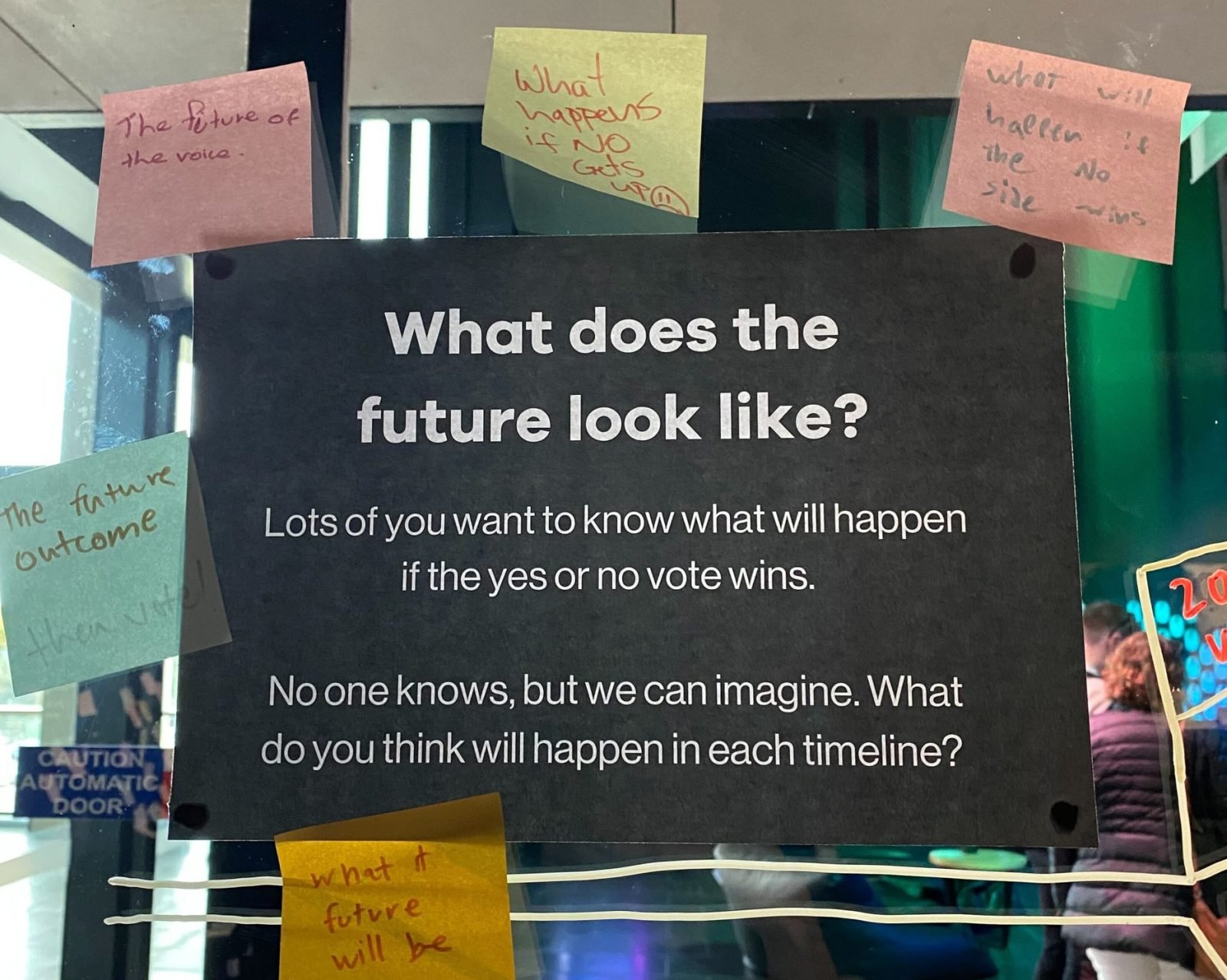Posted 6 Sep

Over the last few months, we’ve been displaying a temporary exhibit encouraging visitors to ask questions about the upcoming referendum for the First Nations Voice to Parliament. As a museum focused on engaging 15-25 year olds, we wanted to create a space for caring inquiry. We wanted a place where our young visitors – who may or may not have voted before – could ask questions and receive accurate answers.
We’ve asked and answered all sorts of questions. These questions varied greatly, everything from “Will this divide the country?” to “Why can’t we make a Treaty first?”. Most of the questions were answerable, and the wall of answers eventually grew larger than the wall of questions.
However, we started to notice a growing number of questions that we couldn’t quite answer. Our visitors were concerned about what would happen if the No campaign won, or what the future outcome of a Yes for the Voice would be. These sorts of questions can’t be answered by research, but they can be answered speculatively.
As a future-focused museum, a place where we aim to nurture futures literacy within our visitors, we realised this was the exact niche we should be filling amongst all of the discussion. We were missing the part where we encouraged our visitors to look to the future. What will the impact of the Referendum be? What might happen in the next 100 years if Yes wins? And what about if No wins?
We created two timelines that extend beyond 14 October – one for if Yes wins, and one for if No wins – and we encouraged visitors to add what they thought might happen either way between 2023 and 2123. Our visitors rose to the occasion.

For the Yes timeline, they envisioned that Treaty might come within the next 10 years. They thought that First Nations people would have more power over their land by 2050. Incarceration would decrease and health outcomes would improve. They see the century rounding out with a thriving community of First Nations people.
For the No timeline, one visitor thought that there might be a second referendum on Treaty and Voice in 2035, but someone else asked why wait when we can do that now? Another thought that by 2030 we would have an equal and unified Australia, which several other visitors disagreed with. But otherwise, things were a little more dire. Our visitors thought that there would be protests as we regressed. That maybe the century would round out with increased violence, racism, and ultimately the loss of the oldest living culture.
The future doesn’t exist yet, it’s what we create together. Spending time speculating about what the next 100 years might look like – either if Yes or No wins – is useful because it lets us consider what we want the future to look like, and what we need to do now to get there. With any vote, we all have more power than you might think. What do you want from the future? How will your vote create that future?